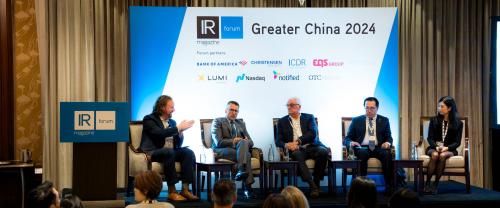From company-compiled consensus to the impact of Mifid II, Alex Money, founder and managing director of ACE Consensus, talks about the changes in consensus management and what they mean for IROs
Can you explain your take on an IRO’s relationship with consensus management?
Every IRO is familiar with the process of consensus management. If you have changed employers in the last decade, there is a high chance your job ad included an explicit reference to analyst forecasts. Equally, if you last moved jobs two decades ago or longer, the chances are even higher that consensus management was not mentioned in your expected duties back then.
Why have these changes occurred?
There are various reasons for this change, not least the ongoing professionalization of the investor relations function. But looking ahead to the decade to come – and forecasting is always a perilous activity – it is highly likely the relationship IR professionals have with analysts and their forecasts will once again change materially.
So can you place company-compiled consensus forecasts in a historical context?
Historically the ‘market forecast’ was the consensus number traders or investors could find on their dealing screens, provided by industrial aggregators such as Thomson Reuters I/B/E/S or Bloomberg Estimates. The advantage of these platforms to investors was their breadth of coverage – both providers cover more than 20,000 stocks – and accessibility from a single source.
But there was a trade-off in terms of quality: for example, consensus numbers that included out-of-date forecasts, or inconsistent treatment of accounting items by different analysts. IROs in listed companies found third-party forecasts could be misrepresentative of their company performance, requiring frequent clarification to investors and management.
How did IROs react?
In frustrated response, they began compiling consensus estimates themselves. Our own analysis suggests that in 2011, less than one third of the FTSE 100 compiled their own consensus for external consumption. By 2016, more than three quarters were doing so, though many investors continue to rely on consensus forecasts from data aggregators.
Do you see this changing?
The status quo is likely to change. Mifid II will require analysts to monetize the value of their research. The traditional model where analysts provide their forecasts for free to the aggregators, who in turn repackage and sell the information to investors, is less likely to fly in the future.
What will these changes look like?
Changes may include aggregators paying analysts for forecasts, or analysts simply withdrawing their data from the aggregators’ platform. Either way, it is likely to reduce the number, and possibly the quality, of forecasts available via aggregator platforms. Assuming analysts are still willing to provide data direct to companies – based on a give-to-get model – in the post-Mifid environment, company-compiled consensus forecasts will become even more important as a source of market expectations data.
This in turn is likely to raise scrutiny on how companies compile these in-house forecasts. For example, what prevents an ‘inconvenient’ number being excluded? The process is currently unregulated, but if the data becomes more salient to share price movements, we can probably expect that to change.
Are there any other issues to consider?
Another issue is the changing locus of forecasts. Mifid II implies that buy-side analysis will grow at the expense of the sell side. Current platforms do not routinely capture buy-side estimates, and not much work has been done in exploring the motivations for buy-siders to engage. Does the give-to-get model work for them, for example? What is clear is that if consensus forecasts are to remain representative of market expectations, buy-side analysis will increasingly need to be included.
So how would you sum up the situation?
Consensus forecasts have evolved over the last decade, and the dynamics will likely change again in response to Mifid II. Company-compiled forecasts could become even more important to the market, potentially increasingly regulatory pressure on IROs. And as the constituency of buy-side analysts expands, new approaches will need to develop in order to ensure the market representativeness of consensus forecasts.










